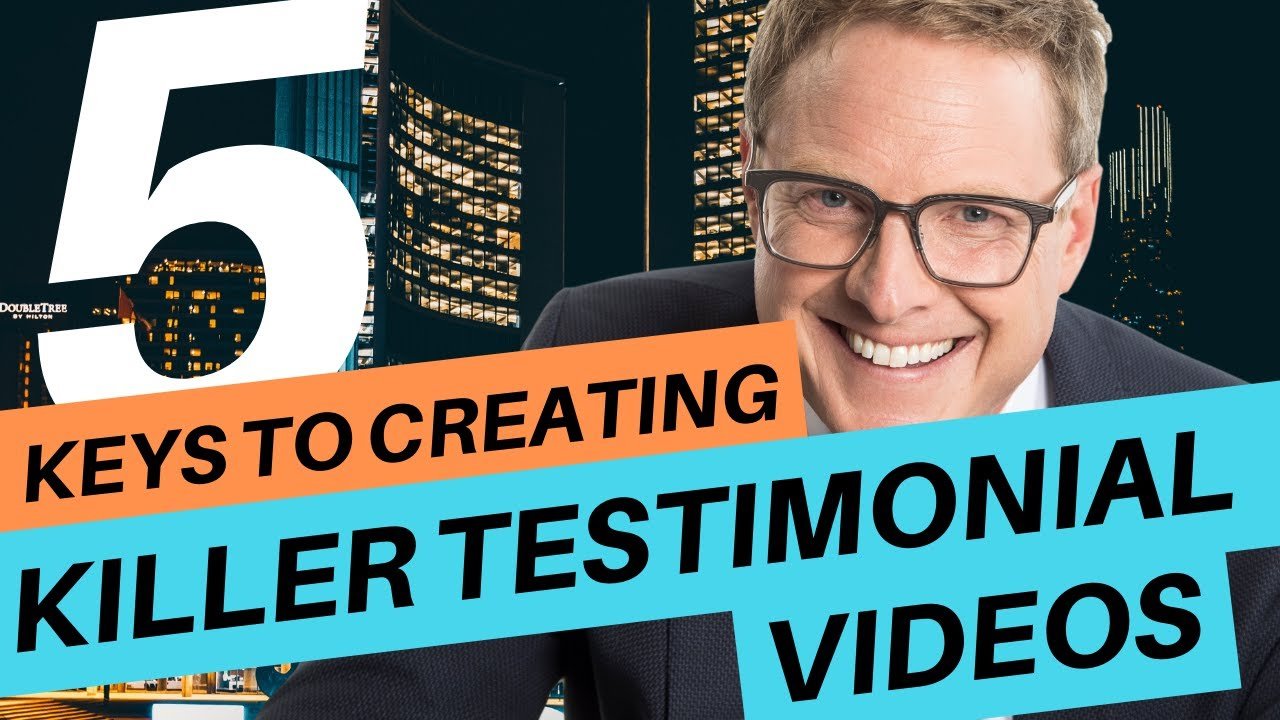Most testimonial videos lose their viewers before the end of the video (where your call to action is). Here are the 5 secrets to …
source
Case Study: 5 Keys to Creating a Killer Testimonial Video


Most testimonial videos lose their viewers before the end of the video (where your call to action is). Here are the 5 secrets to …
source
Lesson #2 FTW!!
Make the music louder man
GREAT VIDEO, THANK YOU SO MUCH FOR THE INSIGHTS! 🙂
Haha you’re comparing a weight loss journey to software testimonial. I actually laughed out loud 🤦🏻♂️
Heading into a new testimonial shoot for a construction biz doing my research and collecting my thoughts!
My takeaways from your video, connecting it to what I know, is a reminder to
– Start with the most painful part of the transformation. How bad things really got. This can create a curiosity gap – ‘did they solve their problem?’
– I don’t have the opportunity to use present-tense footage, but can perhaps pull photos of the process during the construction job. It is true and a good reminder that the ‘quality’ really doesn’t matter – just how good of a story can I tell.
– Show, Don’t Tell. Let’s show the family using their new space and enjoyment of it. Take time to capture that b-roll. I’ll prepare the family to be ready for this on our pre-production call.
Thanks!
Great tips. Thank you!
Excellent video, thank you
This video is about creating a testimonial video. The speaker, Andrew Davis, is sharing 5 key takeaways from a testimonial video he watched about a weight loss product.
Here are the 5 key takeaways:
Create curiosity gaps: The video should start with a curiosity gap to hook the viewers and make them want to learn more. In the example used in the video, the first sentence is "Bird crashed. I want you to know that you've inspired me." This creates questions about who Bird is and what he did to inspire Vance.
Use present tense: The testimonial should be shot as the transformation is happening. This creates a sense of urgency and makes the video more engaging.
Show, don't tell: Instead of simply telling viewers about the impact of the product, show them. In the example video, Vance's weight loss journey is documented which is more impactful than just telling viewers he lost weight.
Use music wisely: Music can be a powerful tool to evoke emotions in the viewers. The video uses slow-building music to create momentum and help viewers feel the emotions behind the story.
Delay the reveal: Don't reveal everything at the beginning. In the example video, they wait until the end to reveal how much weight Vance lost. This keeps viewers engaged and wanting more.
Excellent insights shared. Thank you Andrew and look forward to watching future videos!
amazing
Such valuable info here, why doesn't this man have more subs?!!!!!!
Fantastic inputs 🎉
Great breakdown
great video. Thank you
Brilliant Drew – just rewatched. Him tagging social media whiz/comic Bert Kreicher was also a big factor in getting views for him.
This is actually a very high value video; thanks a bunch Andrew
Loved it. Just what I was looking for. Big hug from Colombia.
❤❤❤❤ Jotting down 🥰🥰🥰🥰🥰🥰🥰🥰🇵🇭🍇
Thank you so much for this brilliant content. I have contacted several of my clients who are up for doing testimonial interview videos which I will do on Zoom. After studying your video several times I have structured 4 questions to ask interviewees. After a short introduction – 1: Ask the interviewee what he/she does professionally. 2: Prior to their coaching package, what were their challenges and what couldn’t they do well? 3: How did they get to the results they have now? 4: What is the successful end result of where they are now as a result of coaching?
I understand this is 3 years ago and approaches have dramatically changed. I believe this was effective then and, given the current stage of the watchers, could use some refinement.
I personally believe we’re in a time where results shouldn’t be delayed. My first rule is identification. Can the viewer identify with 1) yes in there or 2) yes I want to be there.
My initial dialogue usually consists of the end result or the current problem someone else might be experiencing. Then going into who helped make that change and how.
Some great ideas here. Thank you for putting your heart and soul into this
I love this video wonder if you could guide me on how to edit my raw customer testimonial videos, their transformation is awesome I just need a genius like you to help present this properly
Enjoyed what you reported on this video. It's what I call a great lesson. Thanks